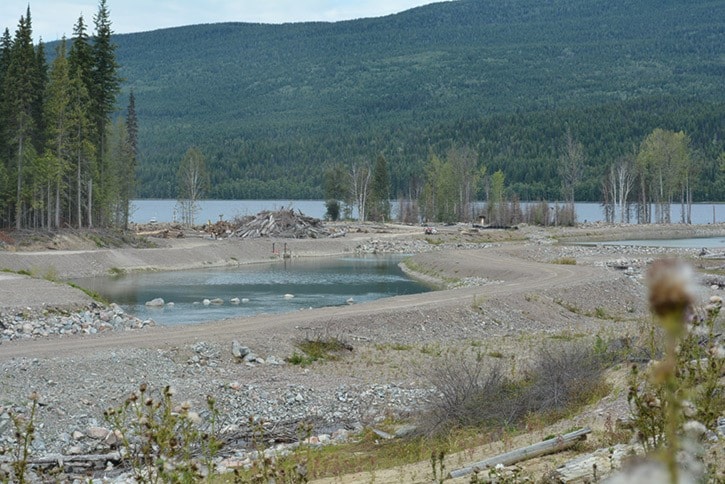Mount Polley Mine’s long-term plan to discharge mine effluent into Quesnel Lake continues to be contentious with local residents.
However, Imperial Metals vice president of corporate affairs Steve Robertson said it is the preferred option for the company.
“We are currently discharging water into Quesnel Lake and when you measure the lake water around the diffusers there is no measurable difference in it, which is a pretty clear indication the lake is successfully receiving the discharged water at this point if there is no measurable difference in dissolved metals,” Robertson said Thursday.
Presently the mine is permitted to discharge 0.3 cubic metres per second into the lake through the water management and treatment system and has been since December 2015, Robertson added.
Outspoken Likely resident Doug Watt feels the discharge plan merely adds insult to injury as residents are still dealing with water quality changes since the Aug. 4, 2014 tailing storage facility breach.
Meeting water quality guidelines is not good enough, Watt said Thursday.
“While the effects of the discharge to the lake were nil for the last year, they are not looking at the pre-breach water quality, only comparing to the BC Water Quality Guidelines (BCWQG), that in many instances are up to an order of magnitude higher than the natural background levels that existed prior to the breach,” Watt said.
“They are also applying to the Ministry of Environment to increase some of the B.C. water quality guidelines to discharge limits presently in place so it is easier operationally for them to discharge water.”
Watt and other local residents have suggested repeatedly the river is a better option for the needed discharge.
However, during a public consultation meeting in Williams Lake, Jerry Vandenberg of Golder Associations, the mine’s consultant, said nine out of 12 factors favoured the lake.
“It would be more complex to put diffusers in the river,” Vandenberg said.
Reacting, Watt said the river discharge option was only given a cursory consideration, as was evident by the company’s inability to provide clear information on possible locations, flow rates and potential fish spawning areas in a conference Tuesday evening between Mount Polley Mining Corporation, its consultants and local residents.
“The so-called best available technology water treatment plant has not even been turned on for the last four to five months, but has been used basically as a pipe to discharge more than four million cubic metres of untreated mine waste water directly into Quesnel Lake,” Watt said.
Robertson, however, said the plant is on and operating continually, with minor stoppage for maintenance and repairs if necessary. The water goes through the plant prior to discharge at all times where it is monitored. The monitoring indicates the level of treatment required to ensure that it meets all discharge criteria before heading toward Quesnel Lake.
Imperial Metals hosted community meetings on its proposed long-term water management plan attracting 10 to 30 people at each. The public comment period on the proposed plan will wrap on Dec. 23, 2016. The deadline was extended, giving people an extra month.
Here Vandenberg talks about present water monitoring practices at the mine during a public information session at the legion in Williams Lake.
